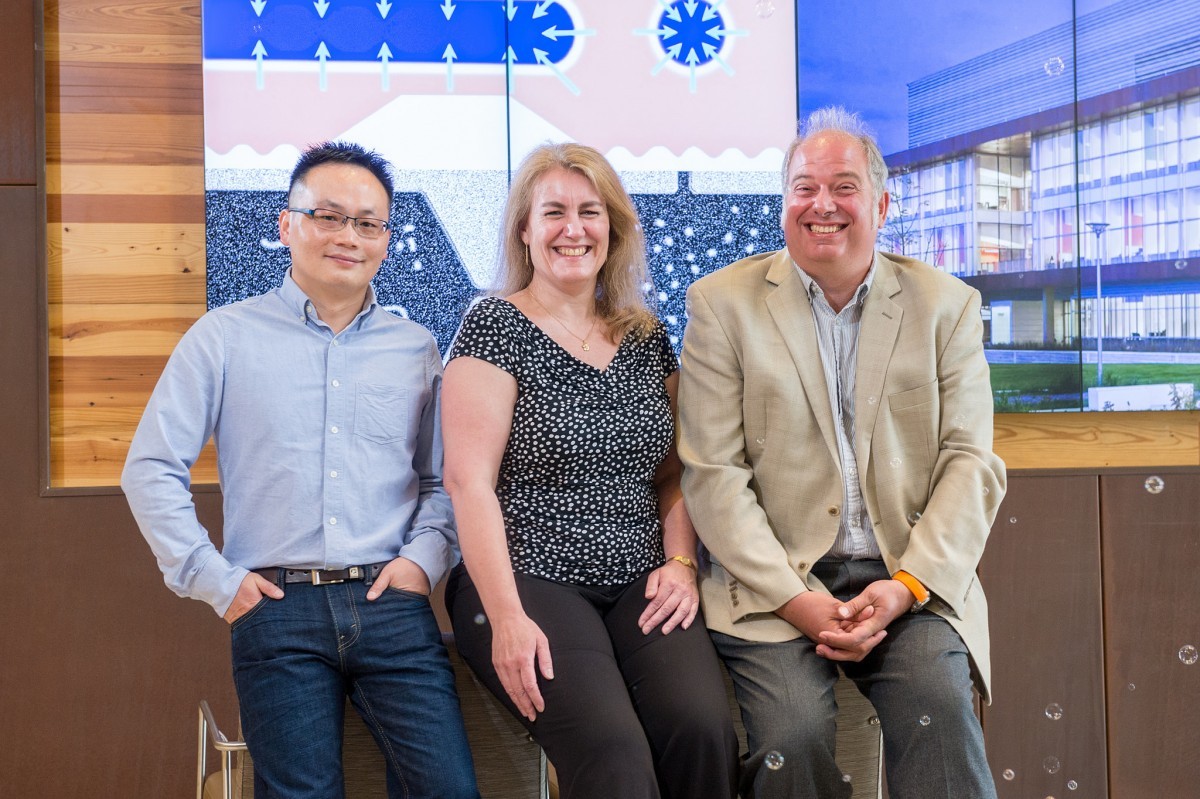
ABOVE: From left to right: Argonne researchers Wanjun Jiang, Suzanne G.E. te Velthuis, and Axel Hoffman published their results in Science Express. Photo by Mark Lopez/Argonne National Laboratory.
UM alumnus Wanjun Jiang [Ph.D./10] uses new methods in physics to create more efficient computer memory
The U.S. Department of Energy’s Argonne National Laboratory recently featured a story on UM alumnus Wanjun Jiang [Ph.D./10], the first author of a study, “Blowing Magnetic Skyrmion Bubbles,” published on June 12 in Science Express. The study has discovered new method for creating magnetic skyrmion bubbles at room temperature. The bubbles, a physics phenomenon thought to be an option for more energy-efficient and compact electronics, can be created with simple equipment and common materials.
As the Argonne lab reports:
Previously, the bubbles had to be made at temperatures below -450 degrees Fahrenheit with expensive equipment like spin-polarized scanning tunnelling microscopes—not practical for making consumer devices like laptops, and not even easy for most scientists to make so they could study them.
“Our new method is the simplest way to generate skyrmion bubbles thus far,” said Wanjun.
Skyrmions, discovered just a few years ago, are tiny islands of magnetism that form in certain materials. If you wrapped one up into a sphere, its magnetic fields would point away in all different directions—so they stay in neat little packages and don’t unravel easily.
Scientists found they could prod these skyrmions to move using electric currents, and an idea was born: could we use them to represent 1s and 0s in computer memory?
Transistors, which form the basis of today’s computing, are tiny devices that stop the flow of electric current (off and on, 1 and 0). But there’s a limit to how small we can make them, and we’re running up against it. Scientists want to find a way to create 1 and 0 by using physics phenomena that don’t actually change the atomic structure of the material—for example, making a line of skyrmions that could be read as 1s (skyrmion) and 0s (no skyrmion).
Research at the University of Manitoba is partially supported by funding from the Government of Canada Research Support Fund.






